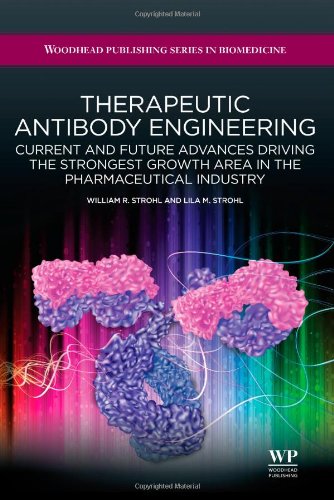Therapeutic antibody engineering current and future advances driving the strongest growth area in the pharmaceutical industry 1st Edition Strohl 9781908818096
$50.00 Original price was: $50.00.$25.00Current price is: $25.00.
This completed downloadable of Therapeutic antibody engineering current and future advances driving the strongest growth area in the pharmaceutical industry 1st Edition W R Strohl

Instant downloaded Therapeutic antibody engineering current and future advances driving the strongest growth area in the pharmaceutical industry 1st Edition W R Strohl pdf docx epub after payment.
Product details:
- ISBN 13: 9781908818096
- Author: W R Strohl
The field of antibody engineering has become a vital and integral part of making new, improved next generation therapeutic monoclonal antibodies, of which there are currently more than 300 in clinical trials across several therapeutic areas. Therapeutic antibody engineering examines all aspects of engineering monoclonal antibodies and analyses the effect that various genetic engineering approaches will have on future candidates. Chapters in the first part of the book provide an introduction to monoclonal antibodies, their discovery and development and the fundamental technologies used in their production. Following chapters cover a number of specific issues relating to different aspects of antibody engineering, including variable chain engineering, targets and mechanisms of action, classes of antibody and the use of antibody fragments, among many other topics.
Table of contents:
Chapter 1: Introduction to biologics and monoclonal antibodies
Chapter 2: Value proposition for therapeutic monoclonal antibodies and Fc fusion proteins
Chapter 3: Antibody structure–function relationships
Chapter 4: Fundamental technologies for antibody engineering
Chapter 5: Sources of antibody variable chains
Chapter 6: Variable chain engineering – humanization and optimization approaches
Chapter 7: Antibody interactions with the immune system
Chapter 8: Monoclonal antibody targets and mechanisms of action
Chapter 9: Therapeutic antibody classes
Chapter 10: Antibody Fc engineering for optimal antibody performance
Chapter 11: IgG glycans and glyco-engineering
Chapter 12: Antibody fragments as therapeutics
Chapter 13: Multiple antibody and multi-specificity approaches
Chapter 14: FcFPs and similar constructs using Fc
Chapter 15: Antibody-drug conjugates
Chapter 16: Development issues: antibody stability, developability, immunogenicity, and comparability
Chapter 17: Interactions of human IgGs with non-human systems
Chapter 18: Cell line development
Chapter 19: Issues facing therapeutic monoclonal antibodiesfor the future
People also search:
therapeutic antibody engineering
therapeutic antibodies review
antibody engineering review
therapeutic antibody discovery
therapeutic antibody
You may also like…
Business & Economics - Industries
The Indian Hospitality Industry Dynamics and Future Trends 1st Edition Sandeep Munjal
Business & Economics - Industries
Forecasting for the Pharmaceutical Industry 1st Edition Cook
Computers - Artificial Intelligence (AI)
Science (General)
Politics & Philosophy - Government & Politics
Business & Economics - Industries
Business & Economics
The Life Insurance Industry in India: Current State and Efficiency 1st Edition Tapas Kumar Parida













